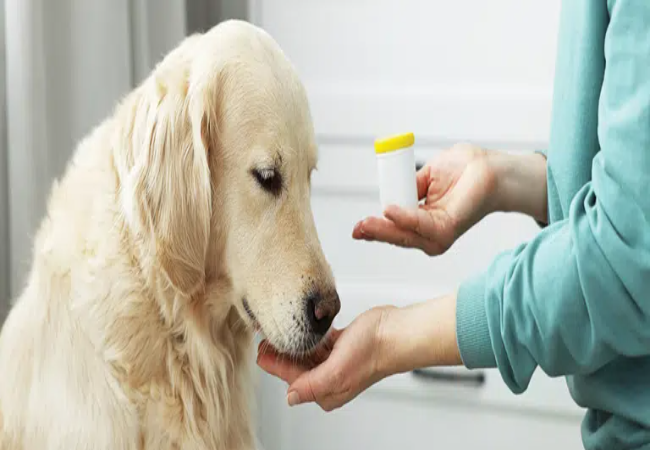Veterinary Guide to Canine Gastrointestinal Adenomas 2025 🩺🐶

In this article
Veterinary Guide to Canine Gastrointestinal Adenomas 2025 🩺🐶
By Dr. Duncan Houston BVSc
🧬 What Is a Gastrointestinal Adenoma?
An adenoma is a benign tumor of glandular epithelial origin—which, in dogs, can appear as polypoid growths protruding into the lumen of the stomach, small intestine, or colon. Though benign, they can cause clinical issues through bleeding, partial obstruction, or malignant transformation if left unchecked.
👥 Which Dogs Are Affected?
- Age: Typically middle-aged to older dogs (7–12 years).
- Breeds: No specific predisposition for adenomas, though large breeds like German Shepherds and Boxers more often develop GI neoplasia overall.
- Predisposition: Dogs with chronic inflammatory GI disease or inherited polyposis (e.g., Jack Russell Terriers with APC gene mutation) may form multiple polyps, some adenomatous.
⚠️ Clinical Signs of Adenomas
- Intermittent vomiting—may contain blood or look like “coffee grounds” if ulcerated.
- Hematochezia (bright red blood) or melena (dark stool) from bleeding lesions.
- Weight loss, poor appetite (hyporexia), and lethargy.
- Constipation, tenesmus or straining if the polyp is located in the colon/rectum.
- Occasional partial obstruction causing abdominal pain or distension.
🔍 Diagnostic Approach
- History & exam: Focus on GI bleeding, chronic vomiting, and rectal signs.
- Bloodwork & UA: Usually unremarkable; may show mild anemia or protein loss from chronic bleeding.
- Fecal exam: Detect occult blood or parasites that could mimic signs.
-
Imaging:
- X‑rays with contrast may reveal filling defects in the stomach or intestines.
- Ultrasound identifies intraluminal masses with smooth margins.
- Endoscopy: Visualises polyps in the stomach or colon and allows biopsy.
- Biopsy & histopathology: Confirms adenoma, rules out adenocarcinoma or malignant transformation.
- Exploratory surgery: For masses inaccessible by endoscopy or suspected malignancy.
⚙️ Treatment Options
1. Endoscopic Polypectomy
- First choice for accessible benign polyps.
- Low complication risk; follow-up scopes recommended due to recurrence risk.
2. Surgical Removal
- Indicated for large, sessile, or partially obstructing adenomas in any GI location.
- Stomach: wedge resection or partial gastrectomy.
- Small intestine: segmental resection with anastomosis.
- Colon/rectum: resection ± anastomosis; may require rectal pull-through for distal lesions.
3. Monitoring & Surveillance
- Histopathology distinguishes benign adenoma vs dysplasia/carcinoma risk.
- Recheck imaging or scopes at 6–12 months to detect recurrence or new lesions.
📈 Prognosis
- Excellent outcome after complete removal of benign adenomas.
- Recurrence is possible in predisposed dogs, such as those with inherited polyps.
- Malignant transformation to adenocarcinoma is uncommon, but early detection prevents progression.
🏡 Home Care & Prevention
- Balanced GI-friendly diet; consider fiber supplements post-polypectomy.
- Monitor stool quality and presence of blood; track appetite and weight.
- In dogs with hereditary predisposition, annual scopes recommended.
- Manage chronic GI conditions (e.g., IBD), which may predispose to polyp formation.
📱 Ask A Vet Telehealth Support
- 📸 Upload videos or images of vomiting or rectal bleeding for virtual triage.
- 🔔 Medication and appointment reminders for pre- and post-operative care.
- 🩺 Remote check-ins to adjust diets or detect recurrence early.
🎓 Case Spotlight: “Harley” the Terrier
Harley, an 8‑year‑old mixed-breed Terrier, presented with intermittent hematochezia and tenesmus. Colonoscopy revealed a single pedunculated polyp 3 cm from the anal verge. A polypectomy was performed via colonoscope; histopathology confirmed benign adenoma. Harley’s bleeding stopped within days. Six months later, a follow-up scope was clear. Owners used Ask A Vet to manage medication and dietary reminders. Harley remains healthy 18 months later 🐶💙.
🔚 Key Takeaways
- Gastrointestinal adenomas are benign glandular polyps in the GI tract, often causing bleeding or obstruction.
- Diagnosis uses imaging, endoscopy, and histopathology to exclude malignancy.
- Polypectomy or surgery cures most cases; monitoring prevents recurrence.
- Prognosis is excellent, but surveillance is essential, especially in predisposed breeds.
- Ask A Vet telehealth provides guidance on diet, follow-ups, medication, and timely detection of recurrence 📲🐾
Dr Duncan Houston BVSc, founder of Ask A Vet. Download the Ask A Vet app to manage GI adenomas—from diagnosis and removal to diet, monitoring, and personalized telehealth support 🐶📲






